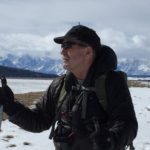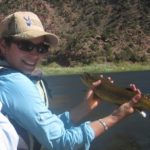Return to Pronghorn
Earth has revolved around the Sun once again in 2016, and so have gone the days of WWF with our efforts to conserve Wyoming’s wildlife and our hunting and fishing heritage. As I reflect on the past year, I am happy to report on several proud successes, including our continued pressure and advocacy efforts for ongoing campaigns, as well as the launch of some new projects.
Successes include:
• Garnering local government support from the Sweetwater County Commission, City of Green River, and the City of Rock Springs for the Greater Little Mountain Coalition’s management proposal for the 522,000 acres in southwest Wyoming.
• A Washington, D.C. visit or “fly-in” concerning 3.6 million acres of public land currently undergoing management revisions through the Rock Springs Resource Management Plan. These D.C. meetings involved our the Wyoming delegation (Sen. Barrasso, Sen. Enzi, and Rep. Lummis), U.S. Department of Interior, Bureau of Land Management (BLM), U.S. Forest Service, and the Council on Environmental Quality.
• A final decision by the U.S. Forest Service not to lease nor develop oil and gas within nearly 40,000 acres of the Wyoming Range in the Bridger-Teton National Forest.
Ongoing campaigns:
• Migrations: Maintained pressure with the BLM and the Game and Fish Department for the designation of migration corridors and specific management needs for the Red Desert to Hoback mule deer migration;
• Highlighted our six priority habitats in southwest Wyoming – the Jack Morrow Hills, Big Sandy, Adobe Town, Greater Little Mountain Area, Red Desert to Hoback mule deer corridor, and lands west of Flaming Gorge, Devil’s Playground and Twin Buttes, through social media posts, a full color postcard, and website updates;
o Increased diverse group of advocates for these areas through conversations with Arapahoe and Shoshone tribal members, union members with Southwest Labor Council and the United Steelworkers, and grew our hunter and angler base of support;
• Continued on Wyoming’s Sage Grouse Implementation Team (SGIT) working to implement updated management plans;
o Brainstormed ideas on how to address winter concentration areas and working with scientists to gather data on relative studies.

In 2016, WWF made progress with its partners on allotment buyouts in areas of wildlife conflict. Partners included the National Wildlife Federation, Wyoming Wild Sheep Foundation, Bridger-Teton National Forest, livestock permittees, funders and a plethora of stakeholders. WWF Field Scientist Steve Kilpatrick serves as our program lead on the Allotment program, as administered by WWF.
This past fall two allotment complexes were addressed, one in the Wyoming Range and one in the Upper Green River drainage. The Wyoming Range project, called the Roberts allotments, consisted of a seven-allotment complex grazed by domestic sheep and considered important habitat for mule deer, elk, moose, big horn sheep and many other species. This allotment retirement effort will address ecological concerns over disease transmission between domestic and wild sheep, and the degraded condition of tall forb vegetation communities on this 67,000 acre allotment complex.


